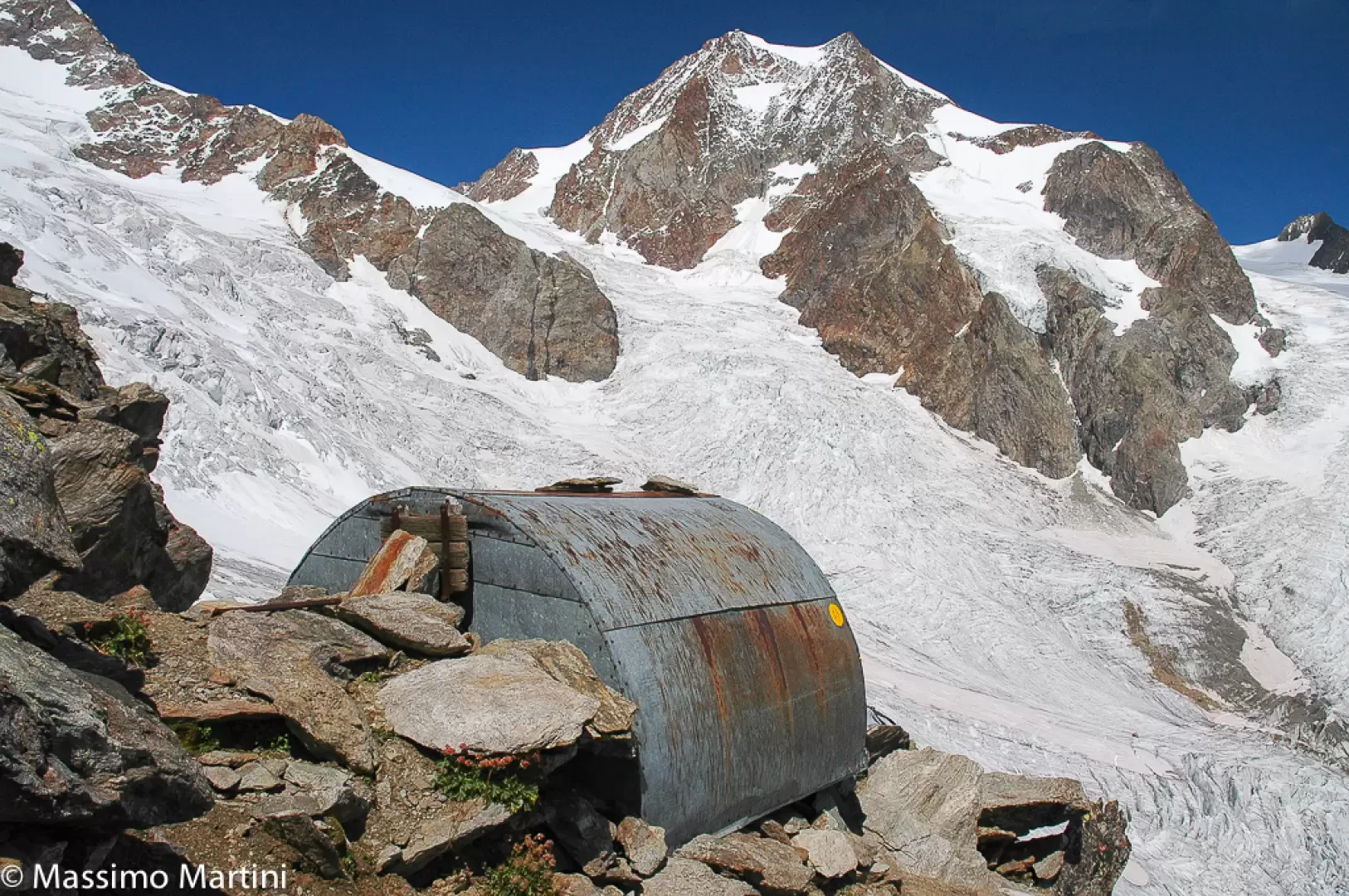Adolfo Hess Bivouac

Access
The bivouac can be reached via the following access routes:
Introduction
The Hess bivouac, located on a rocky knoll near the Col des Echelettes at an altitude of 2,958 m, is one of the historic refuges of the upper Valle d'Aosta, blending harmoniously into the alpine landscape and offering a significant testimony to the evolution of Italian mountaineering. Dedicated to Adolfo Hess, the creator of this type of structure and an important figure in the history of mountain exploration, the bivouac was built in 1925 with the aim of providing a safe and essential shelter for hikers and mountaineers engaged in traverses or ascents lasting several days.
Description
The building, owned by the Club Alpino Accademico Italiano (CAAI), looks like an 'eagle's nest' perched on a natural balcony, offering spectacular views of the Mont Blanc massif and the main surrounding peaks. The interior, deliberately spartan but functional, sleeps two, is lit by candles and has neither a gas cooker nor electricity; the water comes from melting snow, in accordance with a consolidated tradition in high-altitude bivouacs. Inside there is a bivouac book, useful for passing notes and as a source of stories and testimonies.
The access is mainly from the La Visaille side, via path 13, or from Valnontey with paths 22g and 22Eg (T3, 922 mD+, approx. 3h15' walk), on well-marked stretches that wind through alpine meadows and rocky slabs, requiring good physical preparation and attention to weather and terrain conditions. The itinerary is recommended in the summer and autumn months, when the absence of snow facilitates progression and reduces the risks associated with environmental exposure or critical crossings.
Some of the region's classic ascents start from the Hess Bivouac: the route on the north ridge of the Aiguille des Glaciers (3,817 m, 5h, difficulty AD-), the east ridge of the Aiguille de la Lex Blanche (3,686 m, 4h, PD), and the south-west ridge of the Aiguille Centrale de Trélatête (3,908 m, 5h, AD). These itineraries combine historical and environmental interest, offering panoramas of rare beauty and opportunities to study the glacial landscape.
Curiosity: the choice of location and type of construction of the bivouac is inspired by the ideals of simplicity and respect for nature promoted by the pioneering mountaineers of the early 20th century, at a time when the mountains were tackled with reduced equipment and a great spirit of adaptation. The bivouac is a concrete example of emergency architecture in an extreme environment, combining the function of a refuge with the importance of alpine historical memory.
For those wishing to plan a visit, it is advisable to carefully prepare equipment and consult official and up-to-date map sources. The bivouac has no recharging devices or cookers, making it necessary to manage energy and food needs independently.
Information
Location: Col des Echelettes
Quota: 2.958m
Sleeping accommodation: 2
Ownership: Club Alpino Accademico Italiano (CAAI)
Lighting: candle
Gas cooker: not present
Water: melt
Device recharge: not available
Bivouac book:present
Itineraries from the bivouac
- Aiguille des Glaciers (3817m), by the north ridge - 5h00' - difficulty AD-
- Aiguille de la Lex Blanche (3686m), via the east ridge - 4h00' - difficulty PD-
- Aiguille Centrale de Trélatête (3908m), via the south-west ridge - 5h00' - difficulty AD-